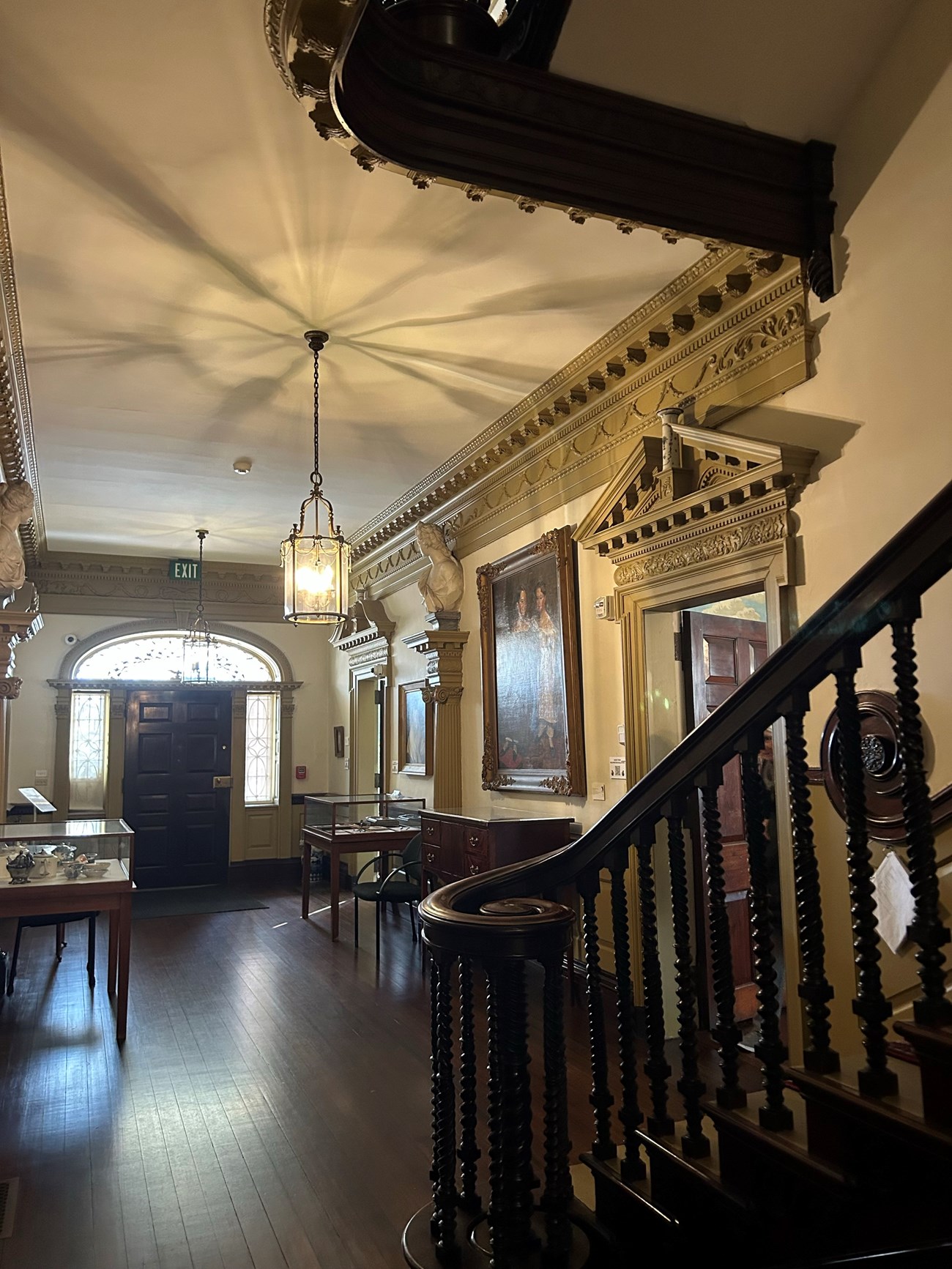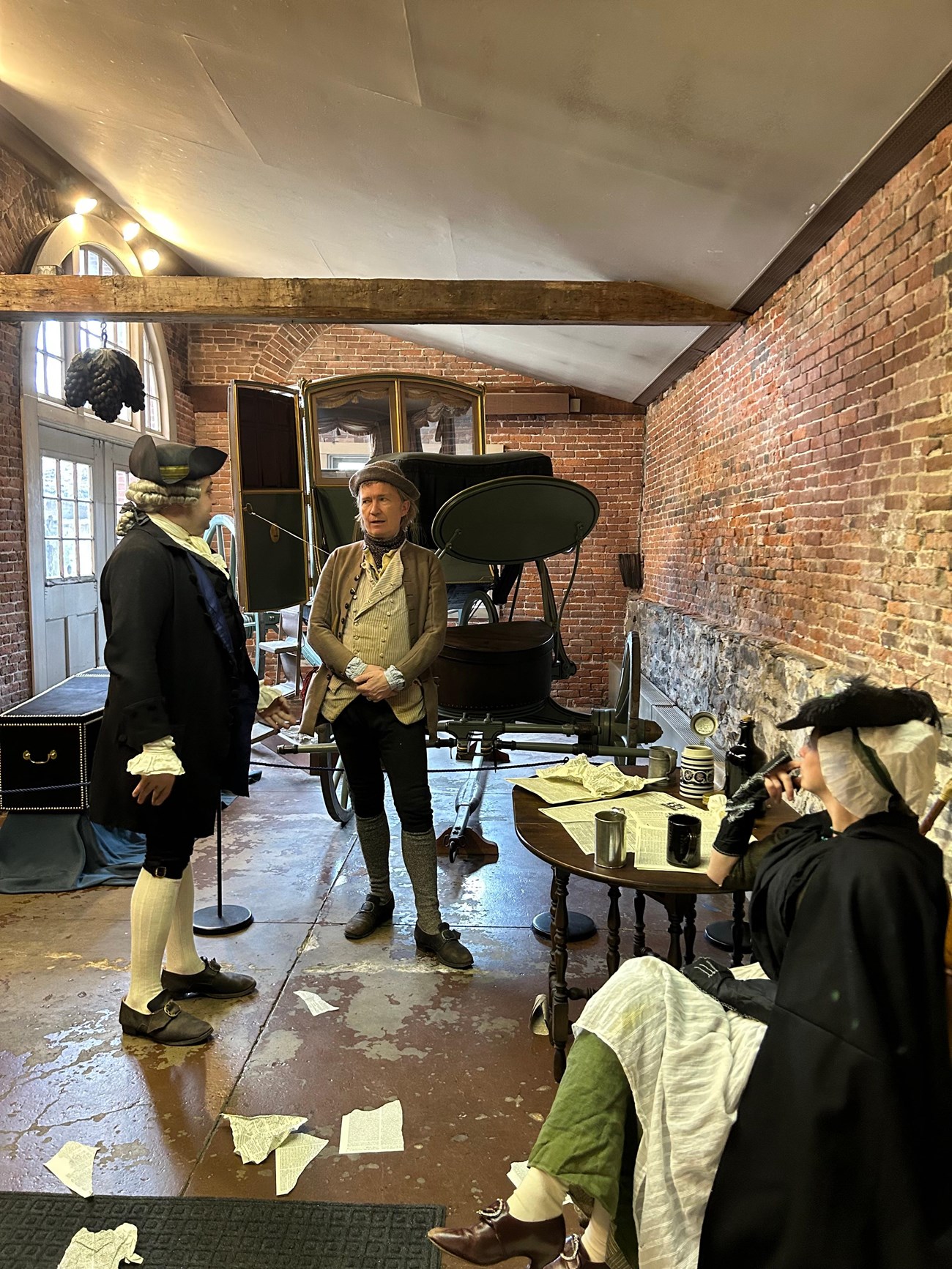Last updated: April 17, 2025
Article
Anyone Up for a Cup of Tea? The Providence Tea Party
In the pivotal years leading up to the War for Independence, several events in Boston drew a lot of attention, not just from New Englanders, but in time, the world. Following the Boston Massacre of 1770, colonists mounted stronger resistance to The Intolerable Acts. Bostonians also participated in one of the most fabled and mythologized events: The Boston Tea Party. This act of resistance against colonial authority was far from the only act of defiance, nor was it the only one that involved tea.
Less than five months after the destruction of the tea in Boston, Rhode Islanders took part in their own protest. Few Rhode Islanders today know of the Providence Tea Party of March 2, 1775. This protest was one of many so-called “tea parties” that occurred across the colonies in the wake of the events in Boston. With increasingly violent rhetoric, and mounting tensions, these acts contributed to the outbreak of war. Just one month later, the outbreak of hostilities in Massachusetts led to the first shots fired at Lexington and Concord.
This essay is part of Blackstone River Valley National Historical Park’s ongoing investigation of significant events that occurred in this region during the Revolutionary War. We invite you to come back in time with us (though not all the way to 1775) as we share what some living historians taught us about the importance of one revolutionary spring.

NPS/Horrocks
History Comes Alive
Shortly after finishing up a tour in the Smithfield Friend’s Cemetery in Lincoln, Rhode Island, on a cold and dreary day in early March, we went south to Providence, the state’s capital. Our destination was the John Brown House in Providence, a historic home from 1788 managed by the Rhode Island Historical Society. We were traveling to the site to attend a “Tea Party,” but it was not your normal tea party.
Walking across the threshold of the John Brown House, a large and stately brick home, we had unknowingly traveled back in time to 1775. Here, we found first-person interpreters wearing colonial clothing and chatting about the “recent” events that had transpired in Providence. By recent, I mean events that had happened 250 years in the past. This living history event was designed to be immersive. We were immediately drawn into conversations over whether our situation with the King and Parliament was just. Our new eighteenth century friends (and potential adversaries) presented cases for and against destroying tea.
During the open house, we met a diverse group of people with varying interests. The people presenting colonial impressions were not a united front, which made the event both realistic and stronger in terms of conveying the complexity of living in that revolutionary moment. Some re-enactors were speaking as local businessmen, men irate at the newest impositions of the Crown and wanting to make a demonstration that would show their displeasure. Others complained that those who wished to “burn the tea” were nothing more than rabblerousers who would only make the situation worse. We also talked with several women who were concerned the recent events would endanger their families and their husband’s livelihoods. And we met some who were just plain confused and didn’t know what they thought about these events. Of course, there was also tea.
When you attend a living history event, it is sometimes possible to forget that you can readily research the basic facts of what happened over two centuries ago. Once we were drawn into difficult conversations, we had to ask ourselves: why were people in Rhode Island so upset about tea, anyway? Why were some colonists so willing and ready to take up muskets to end this perceived injustice? The story became clearer as we walked through the different rooms of the stately home of one of Rhode Island’s most boisterous “Patriots.” As we talked with different individuals, a complex mosaic formed before our eyes, and a product as simple as tea was at its center.
Why Tea?
Tea was and still is the lifeblood of British society both at home and abroad. So, it should not surprise us that tea was at the heart of conflict in British North America in the eighteenth century. By the mid-eighteenth century, the British East India Company was financially struggling because it had too much tea. In an attempted bailout, Parliament passed the Tea Acts, which effectively gave the British East Indian Company a duty-free monopoly on tea. Which, in turn, made the product cheaper. So, why were North American colonists upset about paying less for tea? These acts effectively undercut local colonial merchants who were still forced to pay the tax on tea. Thus, the whole no taxation without representation thing. Some colonists saw this as an unfair deal that advantaged a massive British Company at the expense of the smaller scale colonial merchants. Other issues resulting from mounting British debt from the Seven Years’ War (also known as the French and Indian War) only further increased tensions. Next thing you know, you have the Sons of Liberty burning British revenue schooners and throwing East India Company tea in a harbor.
From December 1773 to the late winter of 1775, multiple tea parties happened in ports across the North American colonies. By late February 1775, Providence was ready for its own. Public notices in the Town Crier announced that at 4:00 PM on Thursday, March 2nd, a gathering would happen in Market Square, the heart of the city. The recently completed Market House was a place of economic and political business. It became a central meeting place in Providence and the perfect place for a public display to destroy the tea that had, for a long time, been “detrimental to our Liberty.” Protest leaders called forth “All true friends of the Country, Lovers of Freedom and Haters of Shackles and Hand-cuffs.” In this case the tea would not be cast into Providence’s harbor like in Boston, but rather protestors would burn that “needless Herb” with a truly Rhode Island flare.

March 2, 1775
On the day of Providence’s Tea Party, a large crowd gathered at the appointed time of 4:00 P.M. in Market Square. The Providence Gazette recorded the only known account of the event. The Gazette reported that the group, comprised of both men and women, gathered around a large fire which was fueled by a barrel of tar. Participants began throwing copies of “obnoxious English papers” onto the flames including a speech by Prime Minister Lord Frederick North. The main event, however, was the “women of the town” feeding 300 pounds of British tea to the fire. The air would have been filled with an odd mixture of the odiferous tar burning and the pleasant smell of burning tea. While the tea burned, a “spirited Son of Liberty” went around painting over the word “TEA” on local shop signs.
The Aftermath
On April 19, 1775, a month and a half after the events of the Providence Tea Party, hostilities broke out between British Regulars and Massachusetts colonial militiamen in the fields west of Boston at Lexington and Concord. The struggle for independence was now the War for Independence. Historical documentaries and movies can compress our sense of time. When we study these events through film or other media, it can seem as if events that transpired for over a decade happened all at once, as though the Boston Massacre, Boston Tea Party, and the shots fired at Lexington and Concord occurred in quick succession. The reality—our history—is much more dynamic. Three of the most important and mythologized events leading up to the American Revolution happened over a period of five years. When we take a broader view to include smaller incidents, such as the Providence Tea Party, it’s clear that dozens of events, sometimes separated by years at a time, all led to the outbreak of hostilities and eventually a Declaration of Independence.
For Rhode Islanders, and people throughout the Blackstone Valley, the first shots of the war happened far away. Most could not reasonably respond to the first alarms of April 1775. But some colonists had already seen conflict up close. Others had also taken part in their own demonstrations. In the summer of 1772, a group of colonists burned the HMS Gaspee. For many people from Rhode Island, the Gaspee Affair is a source of pride. Before the Sons of Liberty in Boston chucked tea into Boston Harbor, the Sons of Liberty in Rhode Island burned a British customs schooner, the HMS Gaspee, to the waterline. Celebrated every June at Pawtuxet Village in Warwick, Rhode Island, Gaspee Day is an event which features a parade and the ceremonial burning in effigy of the Gaspee. Living historians dress in costume and locals as well as tourists enjoy fireworks.
Chances are most Rhode Islanders are familiar with the Gaspee Affair but probably not the Providence Tea Party. Yet the Providence Tea Party was just one of many smaller events that combined to create a powder keg which finally exploded in April 1775. Another important, yet typically overlooked, aspect of these events is the colonists’ connections to the slave trade. Many involved in both the Gaspee affair—and John Brown, the homeowner of our most recent tea party—made their wealth from human trafficking. Their acts of resistance in the early years of the Revolution were as much about maintaining their wealth from the slave trade as an attempt to secure their own independence.
Looking back on these events from 250 years of distance, we can see that lesser-known events, and lesser-known history, is still essential to understanding our shared past. Interacting with living historians can also give us a new perspective. For those living in this area two and a half centuries ago, these events were not old news: they were unsettling and recent developments. Living in the colonies in the years before the Revolution was turbulent.
